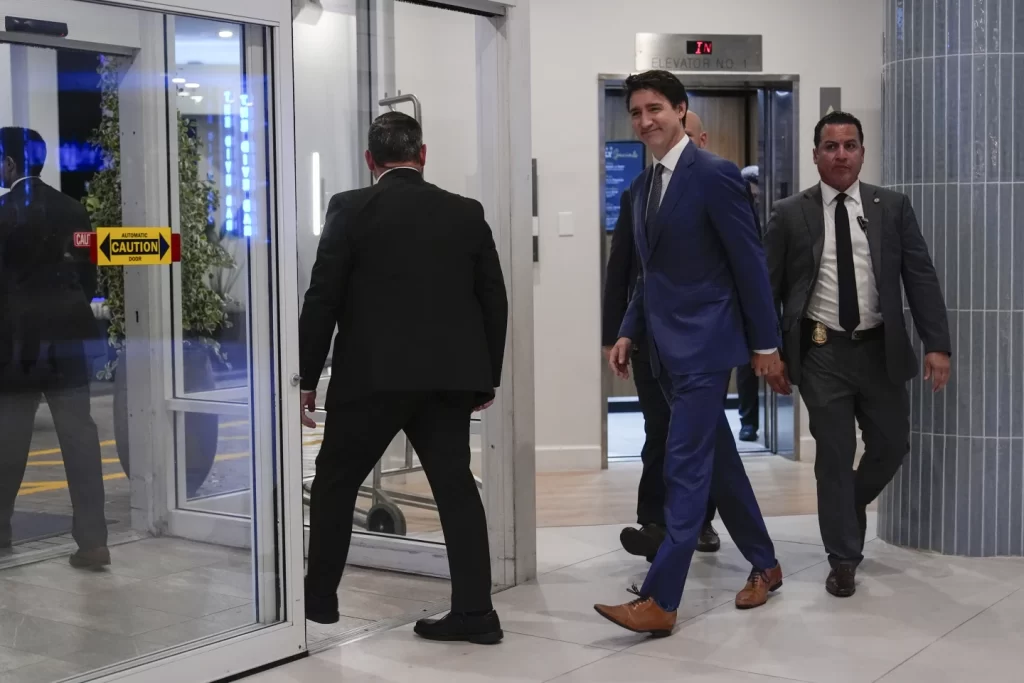Canadian Prime Minister Justin Trudeau flew to Florida Friday to meet with President-elect Donald Trump at Mar-a-Lago after Trump threatened to impose 25% tariffs on all Canadian products entering the United States.

The meeting, confirmed by an official speaking on condition of anonymity, comes after Trump announced plans to levy tariffs on both Canada and Mexico through executive order, citing concerns over drugs and migrants crossing U.S. borders. Trudeau, accompanied by Public Safety Minister Dominic LeBlanc, is the first G-7 leader to visit Trump since the election.
“We’re going to work together to meet some of the concerns,” Trudeau told reporters in Prince Edward Island before departure. “But ultimately it is through lots of real constructive conversations with President Trump that I am going to have, that will keep us moving forward on the right track for all Canadians.”
Trudeau noted Trump’s promise to lower grocery costs conflicts with the proposed tariffs. “He would not just be harming Canadians, who work so well with the United States, but he would actually be raising prices for Americans citizens as well and hurting American industry and business,” he said.

The stakes are particularly high given the extensive trade relationship between the nations. Canada serves as the primary export destination for 36 U.S. states, with daily cross-border trade reaching nearly $3.6 billion Canadian (US$2.7 billion). Canada provides 60% of U.S. crude oil imports and 85% of electricity imports, while serving as the largest foreign supplier of steel, aluminum, and critical minerals.
Canadian officials have begun examining possible retaliatory measures should Trump implement the tariffs, according to a senior government official speaking anonymously. Canada previously imposed billions in retaliatory duties after Trump’s 2018 steel and aluminum tariffs.
Though Trump previously called Trudeau “weak” and “dishonest,” relations between the countries have remained among the world’s closest, with 77% of Canadian exports going to U.S. markets.



